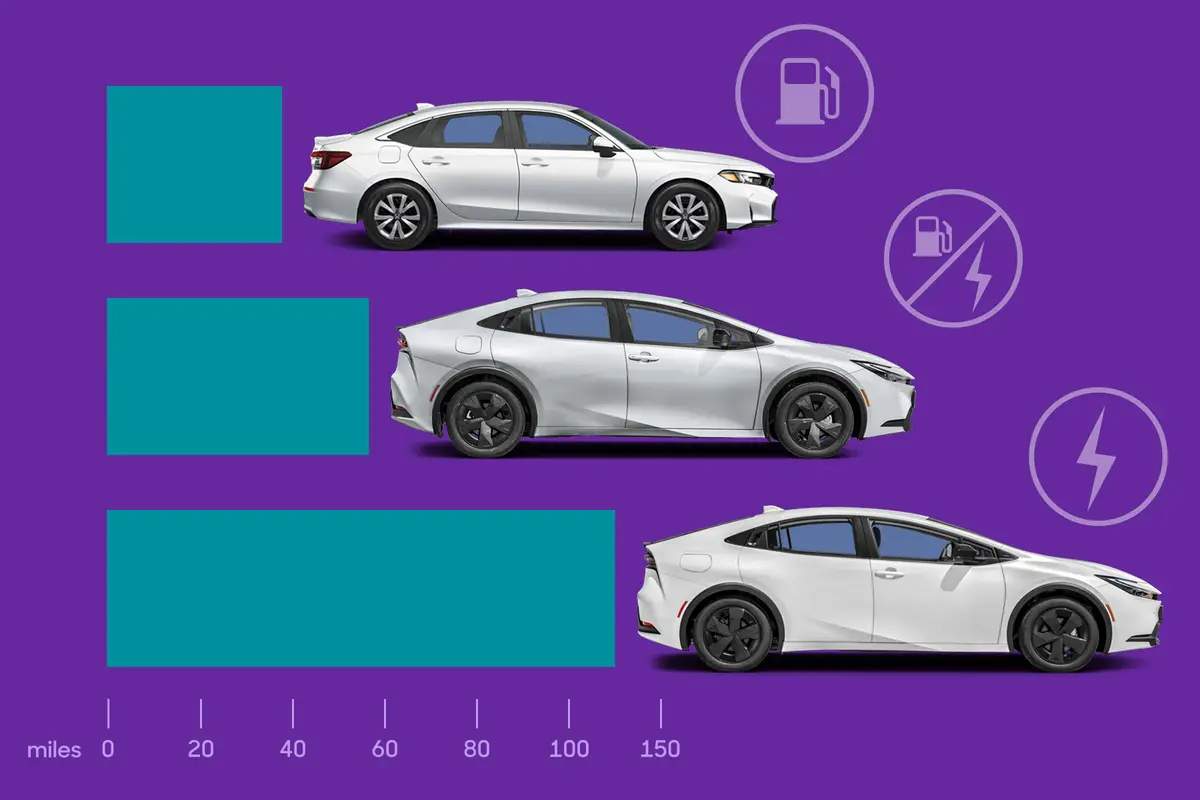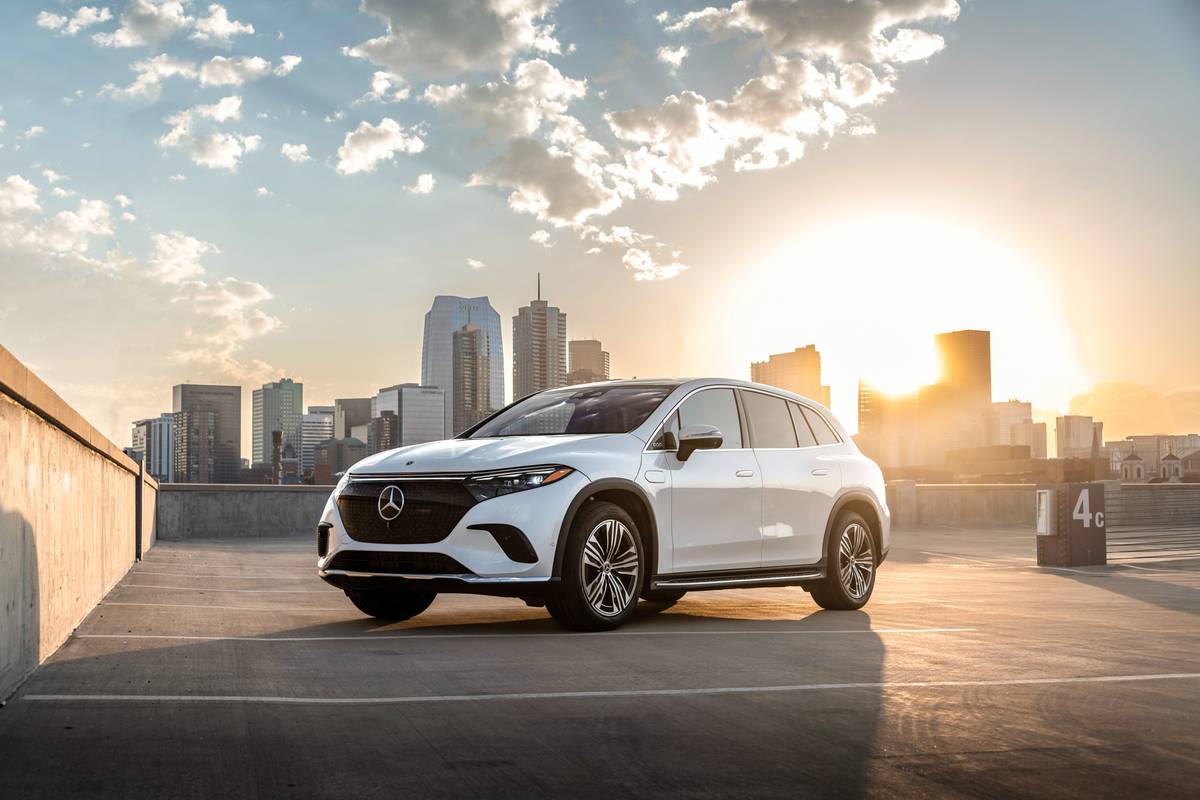chicagotribune.com's view
Sometimes you feel like a truck, sometimes you don’t.
Cadillac has the solution. The new ’02 Escalade EXT, a two-in-one vehicle that’s a sport-utility to carry family and friends upfront, a pickup truck to carry plywood or shrubs in back.
The EXT is Cadillac’s rendition of the Chevrolet Avalanche SUV/truck, only dolled up a lot more. Take Avalanche to the movies, EXT to the theater.
If you wonder why Cadillac needs a truck, you only have to ask Susan Docherty, Escalade brand manager.
Research shows that folks with a Bimmer, Lexus or Mercedes for their weekday work commute typically have a Ford F-150 or a Dodge Ram pickup in the adjoining garage stall for weekend duty, she says.
“About 20 percent of luxury households own a full-size pickup and 23 percent of Cadillac households own a full-size pickup, and most of those get the uplevel trim, a clear signal to us that we needed to tap into this market,” Docherty said.
Escalade appeared in the 1999 model year, a thinly disguised five-passenger GMC Yukon Denali with the Cadillac crest in its nose to help Cadillac rush a sport-ute to market. The eight-passenger Escalade with more Cadillac and less GMC heritage followed for the beginning of the ’02 model year, and now the EXT version has joined it.
Though an obvious Avalanche cousin, the EXT boasts features not shared with its Chevy counterpart.
EXT, for example, has a 6-liter, 345-horsepower V-8, and Avalanche has a 5.3-liter, 285-h.p. V-8. So EXT is quicker to respond to pedal input, though you will experience a little exhaust rumble when you do. That’s by design in keeping with it being an SUV/truck and not a luxury sedan, Docherty said.
Avalanche comes with two- or four-wheel-drive, EXT with full-time all-wheel-drive and no knobs to fiddle with. EXT also has Cadillac’s StabiliTrak stability control system teamed with road-sensing suspension. Avalanche doesn’t, and as a result there’s more body movement over rough roads.
And EXT has Park Assist, a warning system that sounds when backing up to alert the driver that he or she is coming too close to an object behind. With Avalanche, you have to use your mirrors wisely.
What they most notably share is the midgate system, which allows each to convert an enclosed 5-foot 3-inch bed into an 8-foot 1-inch bed. To do so, you fold the rear seats, remove the rear window and lower the rear wall that separates the cabin from the bed, which is what GM calls the “midgate.”
With midgate down, the rear of the cabin becomes extra cargo bed for hauling. If you want, you can leave the midgate in place and remove the rear window to increase air circulation for rear-seat passengers. Of course, it would be simpler to just purchase the optional power sunroof ($1,550) and leave the window in place.
EXT and Avalanche also differ in that Avalanche was designed to sport Chevy-like sheet metal, EXT the more sculptured Cadillac look now shared with the Escalade as well as the new CTS sedan, and soon every Cadillac vehicle.
EXT downplays the exterior plastic cladding while Avalanche oozes it. EXT’s trick is to finish the cladding in the same color as the rest of the body, and Avalanche goes with gray cladding that contrasts with the rest of the body. EXT is a color-coordinated fashion statement, and Avalanche pays homage to gray plastic.
Like Avalanche, EXT has a trio of hard plastic covers to enclose the truck bed, and enclose it so well that it becomes a trunk when you lock the tailgate. Security from a pickup truck bed. You also can remove one or more of those hard plastic covers to load a tall shrub. And there are handy locking stowage bins built into the tops of the truck bed walls.
EXT is tweaked and tuned for more luxury ride and handling, and Avalanche is much more truck-like. When driving EXT you hum with Enya, in Avalanche you wail with Garth Brooks.
EXT benefits from abiliTrak, which improves stability on all road surfaces at all speeds, especially on slick surfaces or when making an emergency maneuver, like swerving to avoid something in the road.
StabiliTrak sensors measure steering angle, wheel speed, brake pressure and lateral acceleration to maximize handling and braking dynamics to keep the vehicle on its intended path.
If sensors detect one or more wheels slipping in acceleration or braking, the system automatically adjusts brake pressure or engine torque to keep the vehicle under control and allow you to steer in the desired direction. The system also has side slip-rate control, so if you lose lateral traction, the brakes momentarily apply to regain stability and traction.
StabiliTrak is teamed with road-sensing suspension, which uses electronically controlled shocks, electronic wheel-position sensors and steering-angle sensor to control vehicle motion on any road surface. With road-sensing suspension, shocks automatically react to limit unwanted up-and-down gyrations as well as vehicle pitch when braking or body roll when turning.
If all works as advertised, you don’t realize that the sensors, brakes, engine or shocks are working to keep the slug behind the wheel from getting into trouble. All those sensors ensure EXT remains steady and secure.
The only time we noticed the systems at work was after pulling out to pass and realizing the EXT sat steady into and out of the maneuver without wanting to first swing out wide into the passing lane and then swing back heavily into the right lane. EXT is very sure-footed, a compliment typically paid to performance cars.
As for steering response, given the option to offer low-effort, luxury sedan-like steering, which requires only fingertip pressure to quickly slip into the parking stall at low speeds, Docherty said she opted for a little higher resistance SUV-like steering response at low and high speeds.
So while we were able to move into and out of the passing lane at highway speeds without unnecessary swing or sway thanks to higher-effort steering, more steering effort was needed when maneuvering the EXT at low speed through a parking garage with narrow lanes and lots of turns. No problem unless you spend more time in parking garages than on open roads.
One gripe. The 6-liter V-8 has plenty of power, but the 12 m.p.g. city/15 m.p.g. highway rating gives energy conservationists cause for concern. Docherty said she’s looking at ways to get more horsepower. Have to suspect EXT is a candidate for GM’s DOD, or displacement on demand, engine in a couple of years in which all 8 cylinders get the weight moving and then 4 cylinders shut off at cruising speed.
Another gripe: the right outside “objects are closer than you think” mirror. Might work on cars, but on a 221-inch long SUV/truck such as EXT, the vehicle you just passed is still partially alongside even when it appears Matchbox car-size b ehind you in that mirror.
One other thing EXT needs, and Docherty says it will get for ’03, are power adjustable brake/gas pedals that move to the driver so the driver doesn’t have to move the seat close to the steering column housing the air bag to reach the pedals.
Base price of the EXT is $49,245. Only option needed is the power sunroof.
Latest news



